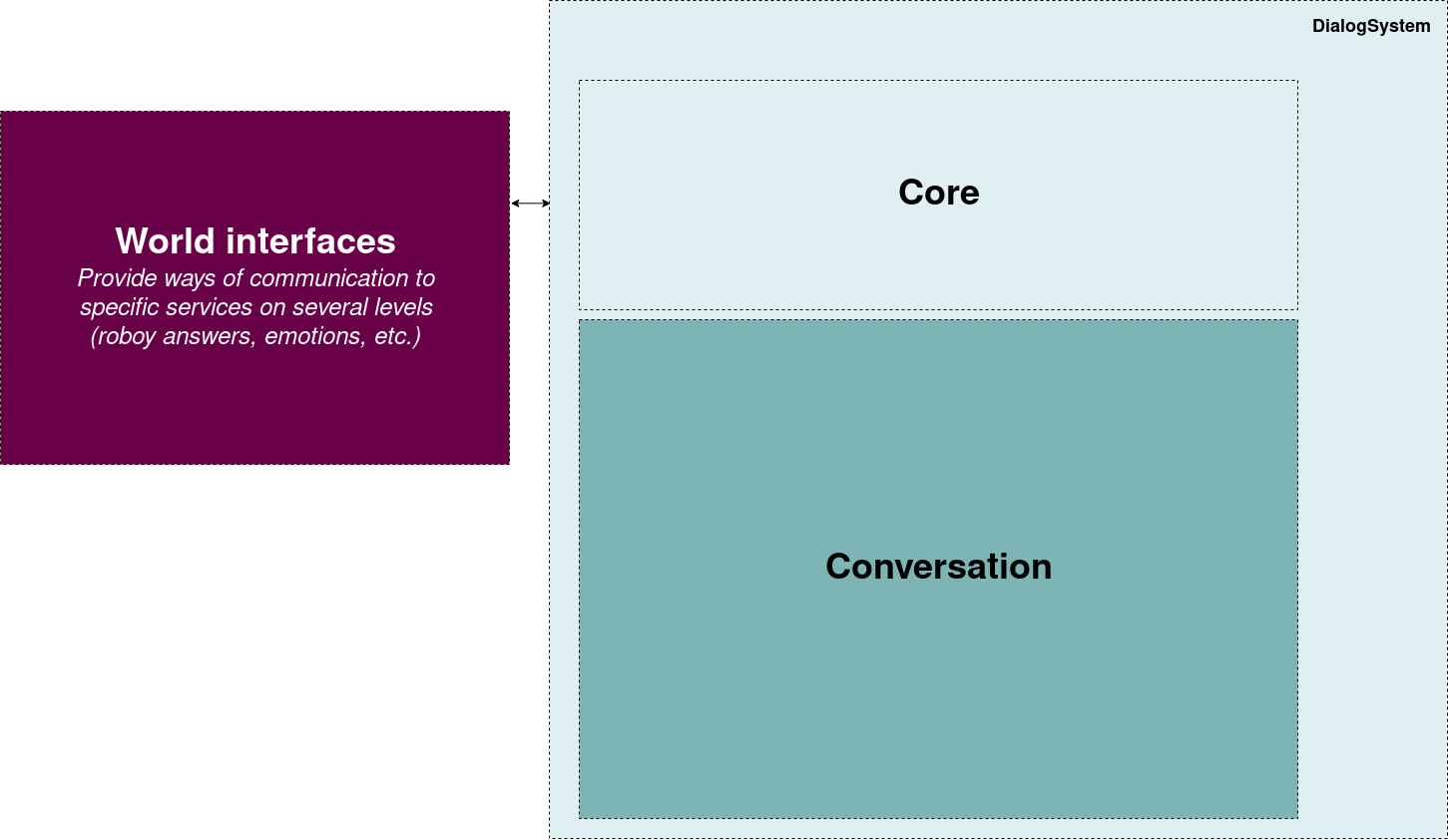Architecture overview¶
The Roboy Dialog System consists of three interacting parts: The Dialog Systems `core`_, which provides infrastructure to each conversation the Dialog System can have with a user and overall management of the Dialog System, `conversations`, which are threads handling per-user interaction and are embedded into the Dialog System and `world interfaces`_, which are services and interfaces over which the Roboy Dialog System may communicate with users.
In the figure you may see a simplified overview of the Dialog System. Below that, the general functionality of the system is explained. For details see the specific sub-pages of one of the three parts. Although this is a description of the systems architecture, we will mention implementation specific details for easier understanding.

Click here in order to see the detailed overview partially provided within the subsections.
Conversation flow¶
In order to understand how the Dialog System works, a basic lifecycle of a Conversation is drawn here exemplary:
When the Dialog System is started, the ConversationManager initializes the Dialog Systems Memory, the NLU and the configured InputDevice. The InputDevice then starts listening to it’s service.
Input from an unknown user will be handled by the InputDevice. Typically, it should make the ConversationManager spawn a new Conversation and then direct the users input to this new Conversation.
Input into a running conversation will be taken by the waiting Conversation thread and then processed using the NLU. This processing includes interpreting it, invoking a state machine step and possibly reacting to the input depending on the new state of the dialog, the input itself and possible information from the Dialog Systems memory or the Context. Generated output will then be delivered to the user via an OutputDevice.
The end of a Conversation will usually be triggered by the StateMachine. If this happens the Dialog System will take care of cleaning up the Conversation and the data it owned.